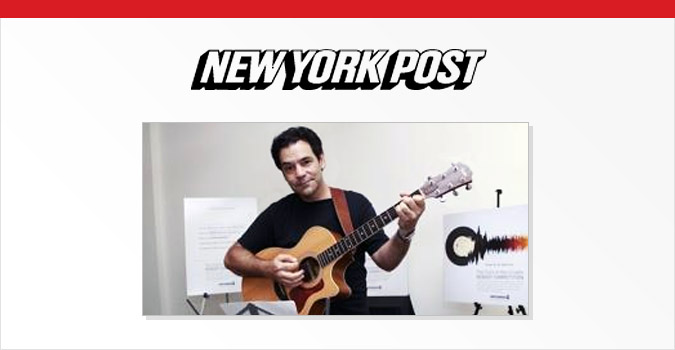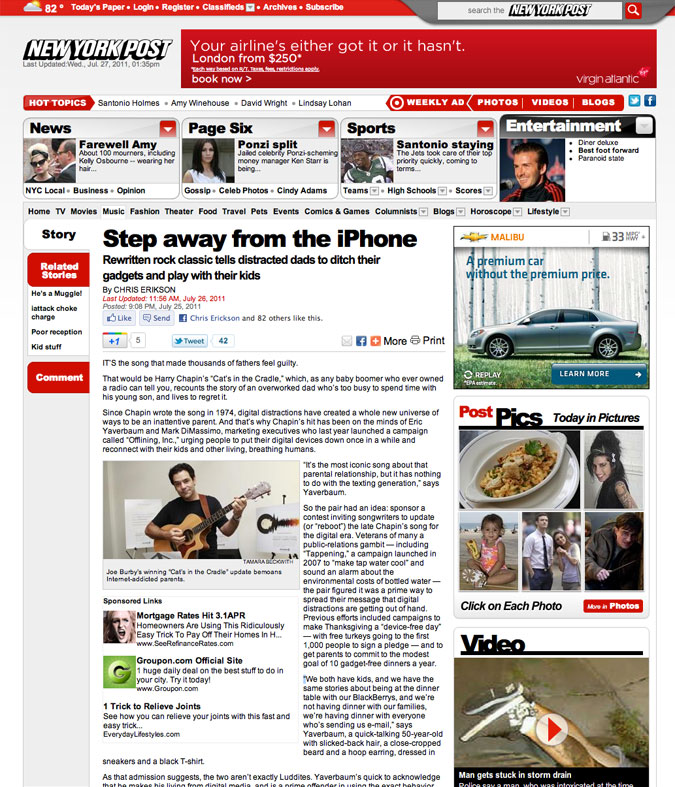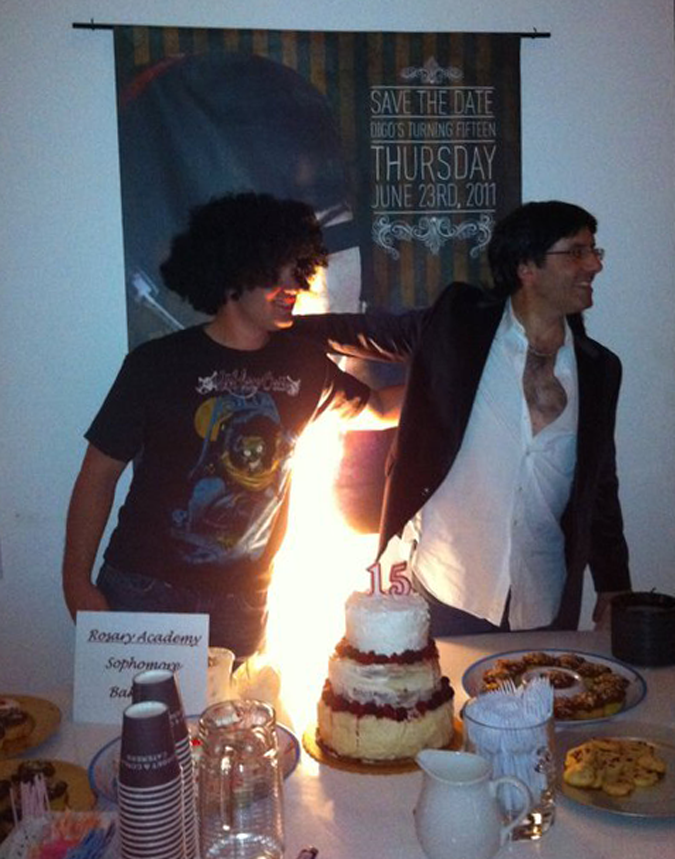By
Team DIGO | 08/02/2011 | in

By Mark DiMassimo
A closet down the hall from my office is about half full of brooms. Whisk brooms, push brooms, straw brooms… even a few bronze and pewter miniatures.
I don’t ask for them, I don’t encourage them, but people keep on bringing. or sending them to me and they have been for years.
It started more than fifteen years ago when I wrote about leaving a senior position at a big, bureaucratic agency. “I bought a broom,” I wrote, “and showed up at a great agency I had read about in the press. I took my broom to the top guy there and I said, “I’ve realized I’d rather sweep the floors in a great place than rule a mediocre place.”
This began the second phase of my career, driven by that principle, which continues to be a great adventure.
I was looking at a new broom I’d received the other day and thinking about that story. Funny thing is, it’s just one of many stories I’ve told about my career. It’s not even a story I’ve told regularly or broadcast with much weight or frequency. And yet, it seems to have taken on a life of its own. In spite of my neglect, it’s out there working for me to this day.
Here’s the thing — it’s a “Tale That Tells Itself.”
Which, in a social world, is exactly what you need. When we look closely, we find that the seed of a business or brand that grows, bonds customers and turns them into advocates is a tale that tells itself. It’s the principle we look to design into brands, advertising campaigns, product features, promotions, websites, display ads… everything we do.
We’ve learned a lot about tales that tell themselves, and we’d love to share these stories with you. If you’re interested in hearing more, drop me a line — not a broom! — at mark@digobrands.com.
Cheers,
Mark DiMassimo
[social_share/]
By
Team DIGO | 08/01/2011 | in
By Jeff Pundyk
We’ve heard a lot of discussion about how marketers are losing control of their medium and their message as digital channels and user-generated content compete for consumers’ attention.
And, indeed, more consumers fast-forward through commercials and are finding their video on the Internet; traditional media properties are losing ground to blogs and social networking sites as the primary source of information, and, of course, consumers are completely absorbed by their smart phones.
Who’s supplying all that content? Not traditional marketers. Other consumers who write reviews, film testimonials, “like,” “friend,” and tweet their tales of good and bad customer service.
It’s an engagement revolution. And, yes, that means some loss of control. But it also means that there a many more ways to engage with consumers. For mid-size growth companies the challenge is not about losing control, it’s about realigning the organization to take full advantage of the many new customer touch points now available.
A truly integrated marketing effort – one that unifies sales, customer service, brand management – has long been given lip service. But it’s usually been a series of discrete activities, run by departments that are often silo-ed. Marketing “owns” the brand while sales “owns” the customer, for instance. Today, as the places where customers and brands meet proliferate, shared ownership becomes a necessity.
Technology offers a way in, but it is a particularly difficult area for mid-sized companies with stretched resources and limited technical capabilities. Technology cannot only insure that the brand is represented at all the digital outposts, but can connect the dots between what happens there and what happens in sales and customer service. But to do so, the technology team needs to be a real voice in developing strategy alongside the other functions, not simply be asked to fill a prescription.
The new customer interactions are pushing organizations out of their comfort zones – into online publishing, community management, real-time customer service, risk management. Organizations need to find new working models to meet the opportunity, ones in which internal functions truly collaborate and share responsibility. Mid-size organizations should look at the engagement revolution just like consumers do – as an opportunity to develop new skills, new tools and, most importantly, new ways of working together.
Related Reading: “We’re all marketers now”, from The Mckinsey Quarterly.
[social_share/]
By
Team DIGO | 07/29/2011 | in

A weekly post on some of our favorites from around the Web.
This week’s topic: Brand Driven Growth
Plus, a few related #fridayfollows that we throw in for good measure:
@jhagel (John Hagel)
@rosabethkanter (Rosabeth Kantor)
@tedcoine (Ted Coine)
@johnbattelle (John Battelle)
and a couple of homesite favorites:
@markdimassimo
@Jpundyk
[social_share/]
By
Team DIGO | 07/27/2011 | in

Joe Burby, an amateur songwriter and former actor and playwright who works in sales, is the winner of the Cats in the Cradle Reboot contest. The contest, sponsored by our sister site Offlining, challenged songwriters to update the Harry Chapin classic to reflect today’s always-online culture. Burby, who accompanied himself on acoustic guitar (unplugged, of course), is featured in an article covering the contest in the New York Post.

[social_share/]
By
Team DIGO | 07/16/2011 | in

We’re back. Hit us with your calls, your emails, your tweets. Text us. IM us. Go ahead and Poke us.
Friday was a DIGO Brands Offlining Day. From 10 a.m. to 4 p.m., we took ourselves offline and brought everyone in our organization together to focus their full attention on discovering, inventing and developing ideas for our clients.
It’s not how we always work. In fact, most of the time, the place is buzzing with input from the outside world. And we love it. But on Friday, for a few hours, the buzz was entirely driven by the alchemy of interested people giving their undivided attention to one another.
Now we rejoin the wider world armed with ideas, energy and inspiration. And what did you do today?
By
Team DIGO | 07/07/2011 | in
Growth Key: Showing our target audience of obsessive investors that we understand their world.


By
Team DIGO | 07/06/2011 | in

Today, scores of former agencies are dropping the “agency” moniker. Where does DIGO stand? As usual, we’re going to give it to you straight.
If by “agency” you mean one of those traditional, hidebound, pretentious, print, radio and tv factories, with initials on the door, drawn from the names of dead white men, massive overhead, executive committees, public stock, analyst meetings, acquisition funds, full-time novelists with ten-year separation agreements, “integration” by acquisition, A-Team for pitches, B-team for clients, C-team for clients spending less than $100 million, trainees for you, bill by the hour and commissions too, “creative” timesheets, “well it’s your fault because you changed the brief,” If that’s what you mean by agency, then DIGO is definitely not an agency.
On the other hand, if by “agency” you mean your passionate “agent” in the world, your committed partner, your confidant and advisor, your arms and legs and surplus brains and guts too; if by agency you mean your team, your comrades, your eyes and ears in the marketplace, people working on your marketing problems and opportunities even as you sleep; if you mean the people who are helping you build your brand and your business, make the most of social, mobile and digital opportunities as well as wring the last bit of efficiency out of traditional channels; if you mean the people who always delight you with unexpected ideas, who sweat with you and celebrate with you too; if by agency you mean the people who make your job possible and your mission attainable, well then DIGO is definitely an agency, and damn proud of it!
By
Team DIGO | 06/24/2011 | in












